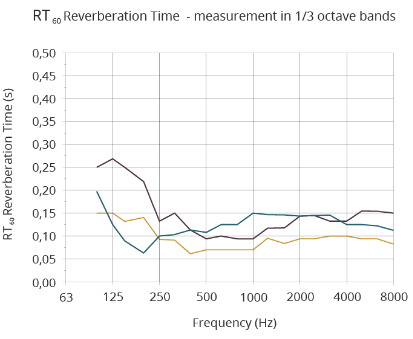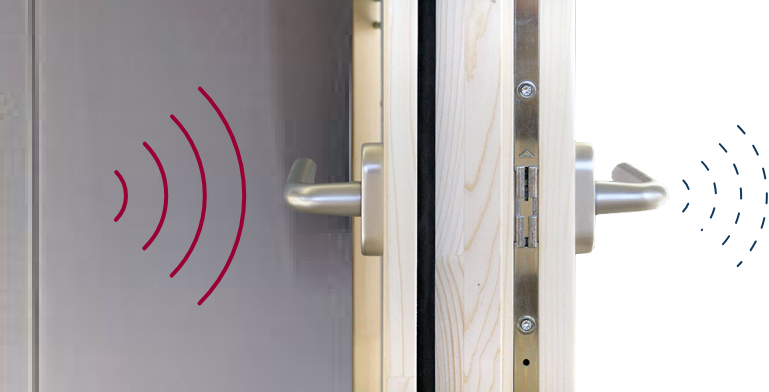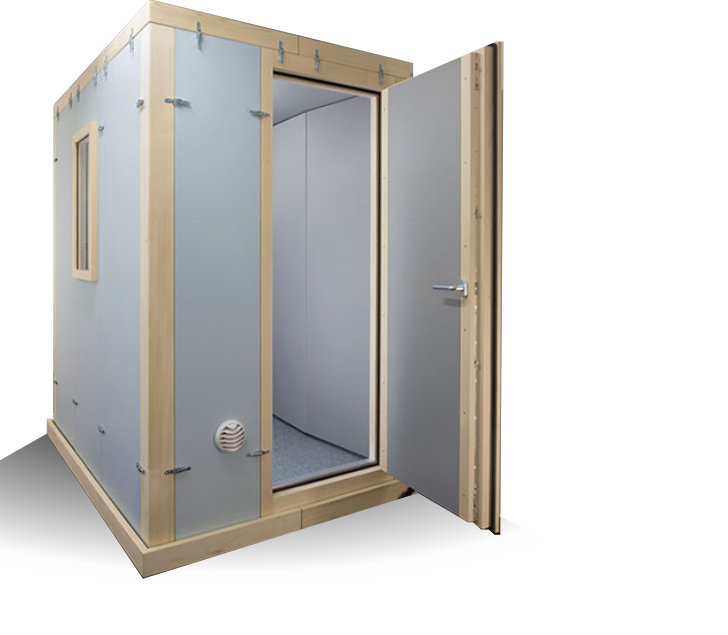Effective sound insulation
Combating noise directly at the source is generally the most effective form of noise protection. This involves three things:
Reduction of sound generation
Reduction of sound transmission
Reduction of sound radiation
Because these efforts are aimed directly at the source of the noise, they are also known as primary measures.
Encapsulating the source
Where the noise source itself cannot be reduced, the next, secondary measure recommended is the best possible encapsulation.
The STUDIOBOX system offers this optimised encapsulation. No other product on the market achieves demonstrably better values with simultaneously optimised interior acoustics.
Insulation values far above ISO standard
Every STUDIOBOX - regardless of the model - provides a sound level reduction of up to 53 dB, depending on the frequency range. The measured values have been compiled and tested by the Fraunhofer Institute for Building Physics, an institution that has been playing in the top league of research worldwide for decades.
According to the new, Europe-wide standard ISO 23351-1:2020, speech level reduction for soundproof booths & co. is divided into five classes. The top A+ class prescribes a reduction of at least 33 decibels/dB. Classes A, B, C and D are correspondingly lower.
Privacy through perfect insulation
Even if manufacturers, especially of glass acoustic cabins, claim otherwise: privacy/data protection is definitely only guaranteed to a limited extent, even at -33 decibels. A lot of information still comes through clearly. Especially as most of these boxes are only in class A and B.
STUDIOBOXes exceed class A+ by up to 20 decibels/dB.
For comparison:
Although the perception of volume is subjective and also depends on hearing ability, it is said that a decrease of 10 decibels/dB means that we perceive a sound source to be about half as loud as before. Another 10 decibels less halves it again, so it is only a quarter of the original volume, and so on.
Booth design
Double-shell element construction + interior acoustics
Each STUDIOBOX acoustic element has a double-shell construction. The outer and inner shells are connected to each other by a decoupled frame. Tongue and groove as well as double seals in the joints ensure the highest degree of tightness of the assembled acoustic booth. The elements are joined together using toggle locks.


Measurement of a single element in the laboratory
R and Rw are only laboratory values for visualising the sound insulation quality of a component. Here, a single acoustic element is measured in the door test frame of the acoustic laboratory.
These parameters provide information on the quality of the individual element, but not on that of the fully assembled sound insulation enclosure.





